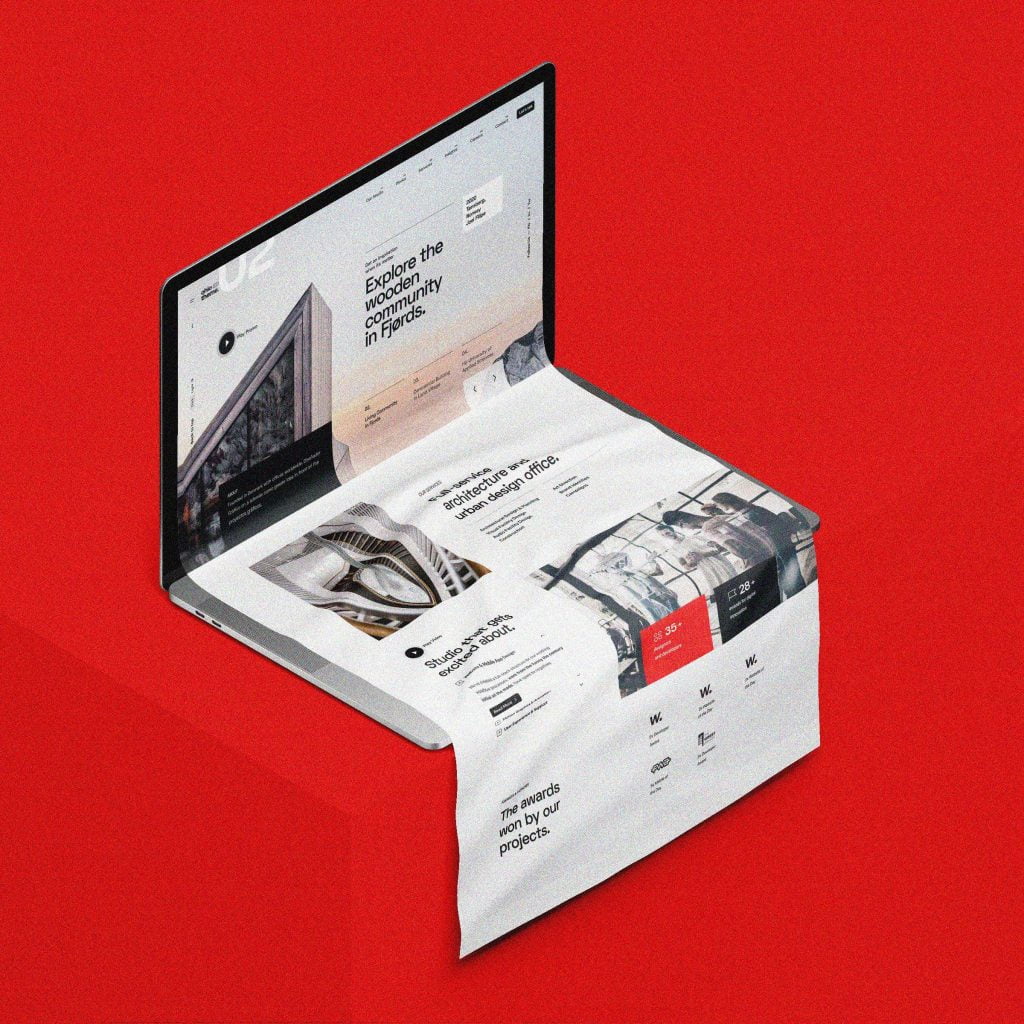Introduction
In the ever-evolving digital landscape, website design plays a pivotal role in capturing attention, enhancing user experience, and driving business success. As technology advances and user expectations evolve, it’s essential to stay abreast of the latest trends that shape the world of web design. This blog aims to provide insights into the cutting-edge techniques, innovative approaches, and emerging best practices that are transforming the way websites are conceived, designed, and experienced. From immersive visuals to responsive layouts and personalized content, we’ll explore the trends that are shaping the future of website design and empowering businesses to connect with their audiences in meaningful and impactful ways.
The Evolution of Responsive Design: Embracing the Multi-Device Era
In the ever-evolving digital landscape, website design has undergone a transformative journey, culminating in the advent of responsive design. This innovative approach has revolutionized the way websites adapt to the myriad of devices and screen sizes that permeate our modern lives.
Responsive design emerged as a response to the proliferation of smartphones and tablets, which posed a significant challenge to traditional website designs. Websites that were optimized for desktop computers often appeared distorted or unusable on smaller screens. Responsive design solved this problem by employing flexible layouts and fluid images that automatically adjust to fit any device.
The benefits of responsive design are undeniable. It enhances user experience by ensuring that websites are accessible and easy to navigate on all platforms. This, in turn, leads to increased engagement, conversions, and overall website effectiveness. Moreover, responsive design simplifies website management by eliminating the need to maintain separate versions for different devices.
As technology continues to advance, responsive design has evolved to embrace new trends and innovations. One notable development is the rise of mobile-first design, which prioritizes the user experience on smartphones and tablets. This approach recognizes that mobile devices have become the primary access point for many users.
Another emerging trend is the integration of artificial intelligence (AI) into responsive design. AI-powered tools can analyze user behavior and preferences to optimize website layouts and content delivery. This personalization enhances the user experience and increases the likelihood of conversions.
The evolution of responsive design has been driven by the relentless march of technology and the ever-changing needs of users. By embracing this innovative approach, website designers can create websites that are not only visually appealing but also accessible, user-friendly, and effective across all devices.
As we look to the future, responsive design will continue to play a pivotal role in website development. With the advent of new technologies and the increasing diversity of devices, the ability to adapt and deliver a seamless user experience will be more critical than ever before. By embracing the evolution of responsive design, website designers can ensure that their creations remain relevant and effective in the ever-changing digital landscape.
Immersive Experiences: Leveraging Virtual and Augmented Reality in Web Design
In the ever-evolving landscape of web design, immersive experiences are gaining prominence as a powerful tool to engage users and create memorable interactions. Virtual reality (VR) and augmented reality (AR) technologies are transforming the way we experience the web, offering designers unprecedented opportunities to create immersive and interactive environments.
VR immerses users in a completely virtual world, allowing them to explore and interact with digital content as if they were physically present. This technology has found applications in various industries, including gaming, education, and retail. By creating VR experiences, designers can transport users to different locations, showcase products in a realistic setting, and provide interactive learning experiences.
AR, on the other hand, overlays digital content onto the real world, enhancing the user’s perception of their surroundings. AR applications range from interactive games to educational tools and industrial maintenance. In web design, AR can be used to create interactive product demonstrations, provide real-time information, and guide users through complex tasks.
The integration of VR and AR into web design offers numerous benefits. Immersive experiences can:
* **Enhance engagement:** By creating a sense of presence and interactivity, VR and AR captivate users and keep them engaged for longer periods.
* **Improve comprehension:** Immersive experiences allow users to visualize and interact with complex concepts, making them easier to understand and remember.
* **Foster emotional connections:** By creating realistic and immersive environments, VR and AR can evoke emotions and create lasting impressions.
* **Drive conversions:** Immersive experiences can provide a compelling way to showcase products and services, leading to increased sales and conversions.
However, it is important to note that the implementation of VR and AR in web design requires careful consideration. Designers must ensure that the experiences are optimized for different devices and platforms. Additionally, they must balance the immersive experience with usability and accessibility.
As technology continues to advance, we can expect to see even more innovative and immersive experiences in web design. VR and AR have the potential to revolutionize the way we interact with the web, creating more engaging, informative, and memorable experiences for users.
Personalization and Customization: Tailoring Websites to Individual User Preferences
In the ever-evolving digital landscape, website design has become increasingly focused on personalization and customization. By tailoring websites to individual user preferences, businesses can enhance user experience, increase engagement, and drive conversions.
One key aspect of personalization is the use of dynamic content. This allows websites to display different content based on factors such as user location, browsing history, and preferences. For example, an e-commerce website might show different product recommendations to users based on their previous purchases.
Another important aspect is the ability for users to customize their own website experience. This can include changing the layout, color scheme, and even the content itself. By giving users control over their website experience, businesses can create a sense of ownership and loyalty.
Personalization and customization can also extend to the user interface (UI). By using adaptive design, websites can automatically adjust their layout and functionality to fit different devices and screen sizes. This ensures that users have an optimal experience regardless of how they access the website.
Furthermore, the use of artificial intelligence (AI) is revolutionizing website personalization. AI-powered chatbots can provide personalized assistance to users, answering questions and guiding them through the website. AI can also be used to analyze user behavior and make recommendations based on their preferences.
By embracing personalization and customization, businesses can create websites that are tailored to the unique needs and preferences of each individual user. This leads to a more engaging and satisfying user experience, which ultimately translates into increased conversions and customer loyalty.
In conclusion, personalization and customization are essential elements of modern website design. By tailoring websites to individual user preferences, businesses can create a more engaging and effective online presence. As technology continues to advance, we can expect to see even more innovative and personalized website experiences in the future.
Conclusion
The latest trends in website design prioritize user experience, accessibility, and visual appeal. Responsive design, minimalist aesthetics, and interactive elements enhance the user journey. Artificial intelligence and machine learning are revolutionizing website functionality, while motion graphics and immersive experiences captivate audiences. By embracing these trends, businesses can create websites that are both visually stunning and highly effective in achieving their goals.





